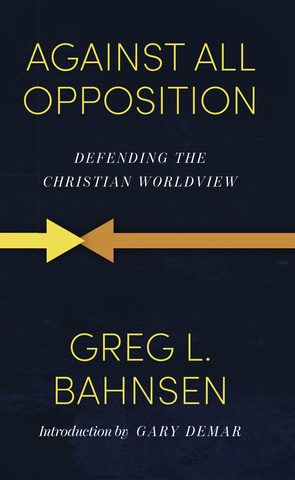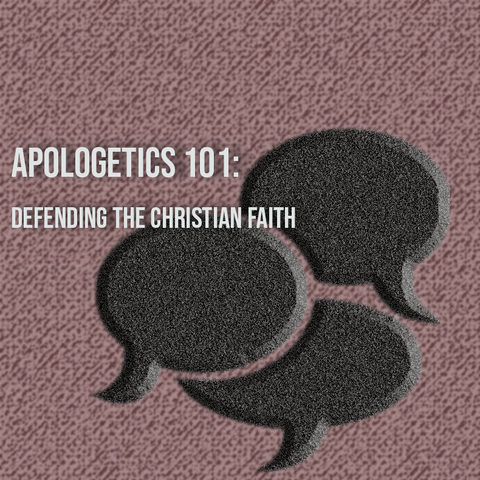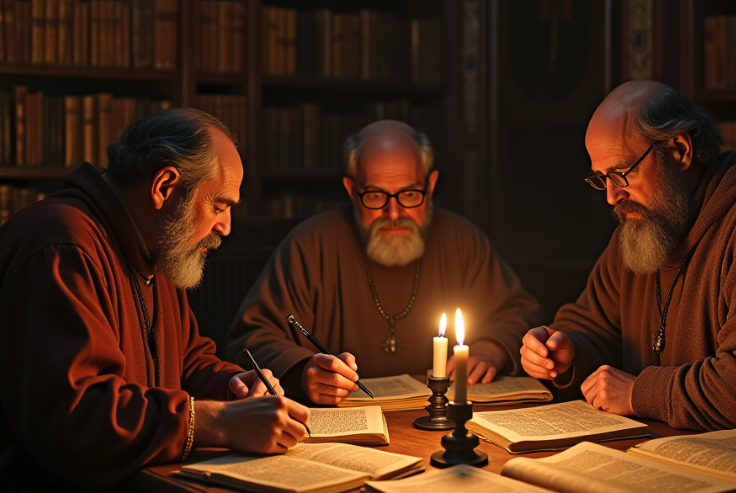Important Note: Gary DeMar’s Facebook page has been taken down. To keep up with the latest from Gary and American Vision or to continue the conversation from articles, podcasts, or videos, please go to the AV Facebook page here.
In his well-known introduction to Athanasius’ On the Incarnation, C.S. Lewis recommends that Christians read old authors (like Athanasius, for instance) to hedge against what he called “chronological snobbery.” Lewis defined this time-bound malady as “the uncritical acceptance of the intellectual climate of our own age and the assumption that whatever has gone out of date is on that count discredited.”[1]
To help combat chronological snobbery, Lewis recommended the reading of old books as a regular practice. He advised that rather than maintaining a steady diet of only new books, the well-balanced reader should alternate between new and old.
We all, therefore, need the books that will correct the characteristic mistakes of our own period. And that means the old books. All contemporary writers share to some extent the contemporary outlook – even those, like myself, who seem most opposed to it…
None of us can fully escape this blindness, but we shall certainly increase it, and weaken our guard against it, if we read only modern books. Where they are true they will give us truths which we half knew already. Where they are false they will aggravate the error with which we are already dangerously ill. The only palliative is to keep the clean sea breeze of the centuries blowing through our minds, and this can be done only by reading old books. Not, of course, that there is any magic about the past. People were no cleverer then than they are now; they made as many mistakes as we. But not the same mistakes.[2]
This observation is critically important, especially for Christians who (should) base their entire modern existence and life-view on a very ancient book. Reading modern books about old books isn’t what Lewis is recommending; he says we should be reading the old books themselves. Not because the old books are somehow more authoritative, but because the old books were written during a very different time. Modern authors are susceptible to modern myths and assumptions, just as older authors were susceptible to the myths and assumptions of their own age. Mistakes are made in modern and old books, but, Lewis says, they are not the same mistakes. This, he believed, was the key to a true understanding, one informed by both ancient and modern thought.

Against All Opposition
The starting point is the God of the Bible. The Bible begins with this foundational presupposition: “In the beginning God created the heavens and the earth” (Gen. 1:1). Against All Opposition lays out the definitive apologetic model to help believers understand the biblical method of defending the Christian faith.
Buy NowThis same tendency is what Pastor David Hall calls the “Arrogance of the Modern.” In a short article in Tabletalk magazine for the book’s 20th anniversary, Pastor Hall writes this:
Modernity is still contemptuous of the perceived shackles of the past but is probably seldom as embarrassing as in the hands of its neophyte scholars, who may not have the benefit of a generational approach. Hubris still haunts. Maybe we could more honestly inquire if our new ideas aren’t drenched with moral superiority and reeking of self-importance.[3]
Strong words, but ones that help to highlight the importance of the situation. Hall and Lewis both point out that far from being a prudent suggestion, reading and interacting with the old books (and interpretations) are necessary to a full understanding of any topic. If we allow our minds to be shaped only by the new, we fool ourselves into thinking we have the whole picture when we really do not.
Nowhere is this prevalence of the modern view on display than the current hot-topic issue of the authority of the historic creeds and confessions. The ongoing “Three Questions” controversy surrounding Gary DeMar is a good example of this (this podcast provides a recent recap.) Most of the inquisitors demanding simple “yes or no” answers to the three questions would likely agree with Rick Brannan’s summation of the creeds:
These classic documents are not simply of historical value, but they are immensely valuable for believers today to read, consider, and understand. They deal in real terms with what it means to live as a Christian. They struggle to quantify complex and confusing ideas in clear, undeniable terminology… The simple doctrinal statements within this creed [the Apostles’ Creed] are clear and concise, and their meaning cannot be misconstrued.[4]
Anyone who’s ever fielded questions from other believers about “a holy catholic church” or what it means that Jesus “descended into hell” knows for certain that Brannan’s contention that these historic documents are “clear and concise” is overstated. The Apostles’ Creed is traditionally believed to have been written very early in church history, as early as the second century AD. The Apostles’ Creed is very similar to an earlier creed (the Roman Baptismal Creed), but there are slight differences.[5]
When confronted by the Apostles’ Creed for the first time, most Protestant Christians are confused by reciting that they believe in a “holy catholic church.” Their modern understanding of the word “catholic” is of the Catholic Church, not the larger meaning of the word as “universal.” Likewise, Jesus’ “descent into hell.” These “simple doctrinal statements” require more explanation and context.
Here is another example, one that is very integral to the “Three Questions.” The Apostles’ Creed, in its second to last line states: “I believe in the resurrection of the body.” The original creed was not written in English, so this statement is a translation of the Latin phrase, carnis resurrectionem. English speakers will immediately recognize “resurrection” in the Latin, and maybe even “meat” or “flesh” in the word carnis (think chili con carne, or carne asada). The usual modern translation of “resurrection of the body,” is by no means a historic consensus. (See this short web article for a helpful summary.) It has been translated “resurrection of the dead,” resurrection of the flesh,” “resurrection of the body,” and even “resurrection of bodies.” The Nicene Creed, written in 325 AD and typically seen as an expansion of the Apostles’ Creed, translates the phrase as “resurrection of the dead.” While there is obvious overlap between all possible translations, there are also differences between the words “body,” “bodies,” “flesh,” and “dead.”
Just as the Roman, Apostles’, and Nicene Creeds built on what previously existed, the creeds and confessions throughout church history have done the same. Assuming that “this is what the church has always believed” is a statement with no historical fact. The church has edited, modified, expanded, reworded, and restated “what it believes” time and time again and often in response to various unbiblical teachings of the day. Note that very well: Over its history, the church has modified its creeds and confessions to better conform to what the Bible states.
Without doing a bunch of historical research and trying to determine what was meant by the writers of the Apostles’ Creed, let’s simply look at the text and try to get a sense of what it is stating. From the outset, we can immediately notice its Trinitarian structure:
I believe in God the Father, Almighty, Maker of heaven and earth,
And in Jesus Christ, his only begotten Son, our Lord
Who was conceived by the Holy Ghost, born of the Virgin Mary
Suffered under Pontius Pilate; was crucified, dead and buried; He descended into hell.
The third day he rose again from the dead.
He ascended into heaven, and sits at the right hand of God the Father Almighty.
From thence he shall come to judge the quick and the dead.I believe in the Holy Ghost,
The holy catholic church,
The communion of saints,
The forgiveness of sins,
The resurrection of the body,
And the life everlasting. Amen
There is very little stated about God the Father, a lot of historical facts about Jesus Christ, and finally five doctrinal topics about the Holy Spirit. In other words, God made everything and got it started, Jesus came and did a lot of things while on earth, and because of this, the Holy Spirit’s role continues in the life of the church.
Notice also that four of the five doctrines attributed to the Holy Spirit are collective and plural: church, saints, sins, life everlasting. Why is only the fourth (resurrection of the body) rendered as a singular? Or is it? Could “the body” mean something different than individual? Origen thought that it might:
In a third-century sermon, Origen noted that the baptismal confession does not speak of “the resurrection of bodies” but “the resurrection of the body”—singular. Perhaps, he suggests, what is raised up on the last day will not be individuals but the body of Christ, a single person that incorporates the whole of humanity with Jesus at its head. Origen’s line of reasoning is based partly on Ezekiel’s vision of the valley of dry bones. What the prophet sees in this vision is not a multitude of individual resurrections but one corporate resurrection of “the whole house of Israel” (Ezek. 37:11).[6]
Before dismissing Origen’s beliefs as allegorical nonsense, read what the Apostle Paul says in 1 Corinthians 10:16–17: “The cup of blessing that we bless, is it not a participation in the blood of Christ? The bread that we break, is it not a participation in the body of Christ? Because there is one bread, we who are many are one body, for we all partake of the one bread.” Perhaps we should understand “resurrection of the body” in the same way: one from many. If nothing else, this is allowing all the final lines of the Apostles’ Creed to be consistent and collective and not individual. It is interesting to note that no translations of the Creed say “the resurrection of my body,” even though the section begins with “I believe in…” If individual bodies is what was originally meant, “my body” would make much more sense than “the body.”

Apologetics 101: Defending the Christian Faith
Apologetics 101 is an in-depth study of defending the Christian faith. The Greek word apologia simply means "defense," and apologetics is the art and act of giving a defense. Christian Apologetics then is the art and act of defending the Christian faith, not a proof of God in general. The Christian apologist must be ready to answer truth claims about the Bible, not claims about Hinduism, Islam, or any other false religion. The Bible makes the bold claim that Jesus is the ONLY way, and the Christian apologist must set his sights on the Bible alone, not on a defense of arbitrary theism.
Buy NowA larger truth about death and resurrection should also be mentioned at this point. God, and God alone, has “life” within Himself. Human beings only have life (whether physical or spiritual) as a gift from God. To have “eternal life” means a life forever connected to God. Eternal death therefore, is forever being separated from Him. Peter Leithart writes:
At its heart, death is separation from God. Life is knowing God; death is estrangement from him. That death is humanity’s curse, and that’s the curse the Son of God assumed for our sake. The Son of God, God from the beginning, God from God and God toward God, whose very being is to be from and with the Father—that Son suffered our Godforsakenness.[7]
Death is a result of Adam’s sin; resurrection is a result of God’s grace.
To close this short study, we have shown that “the body” could easily be a synecdoche (a part signifies the whole) with both historical and biblical usage. This does not prove that individual bodies were not in view by the Apostles’ Creed. If all Christians make up the “one body,” it stands to reason that individuals are not less important than the whole. The larger point, as the Apostle Paul makes clear, is that many individuals make up the Bride of Christ. If the Bride’s body is resurrected, so will ours. But this also is a mystery, according to Paul in 1 Corinthians 15:
The body now is like a seed, and the life of the resurrection is like the tree. There is an unimaginable difference between the seed and the tree. They do not look alike. You would not be able to guess the appearance of the tree by looking at the seed. Yet their identity is the same. In the same way, Paul says, our mortal bodies will be planted and will be raised immortal in Christ. Paul calls this “a mystery” (15:51). In the coming life we will be the same identical persons that we are now—yet unimaginably different. “We will all be changed, in a moment, in the twinkling of an eye” (15:51–52). In this passage Paul explains the meaning of the resurrection by not-explaining it. He points to the mystery of the seed and the tree and offers that mystery as an explanation. He leads our minds right to the edge of what can be grasped or imagined.[8]
Resurrection is a mystery that we can’t fully understand or explain. Even the Apostle Paul, who paid a visit to the third heaven didn’t know if he was “in the body” or not and couldn’t describe what he saw.
I know a man in Christ who fourteen years ago was caught up to the third heaven. Whether it was in the body or out of it I do not know, but God knows. And I know that this man—whether in the body or out of it I do not know, but God knows—was caught up to Paradise. The things he heard were inexpressible, things that man is not permitted to tell (2 Corinthians 12:2–4).
If Paul couldn’t explain such things, it would be wise that we don’t seek to help him. We must be careful to not allow chronological snobbery or modern arrogance to enter in. The creeds are useful and important, but they are not the final word; the Bible is. And even the final word of Scripture is not giving us all of the details. Unless a tree and a seed are the “self-same” with only “different qualities,”[9] it should be obvious that Paul is making the point that what is raised is much different—unimaginably different—than what went into the ground. Ben Myers explains the historical situation well:
Belief in bodily resurrection is one of the controlling undercurrents of the New Testament. Yet the nature of the resurrection is hardly ever addressed directly. The Gospel accounts never try to depict the resurrection itself… The tomb is already empty when the disciples get there. The resurrection has occurred in secret. It has happened—where? In the tomb? In hell? In eternity? Wherever and however it happened, the event has already occurred. That is why the disciples are faced with a decision, whether to believe or not.[10]
We are faced with the same decision, two thousand years later. All Christians can and should affirm with the Apostles’ Creed: “I believe in the resurrection of the body,” but we cannot and should not make it mean more than what the Apostles and the rest of the Bible say.
[1] Arthur W. Lindsley, “CS Lewis on Chronological Snobbery,” Knowing and Doing (Spring 2003). Emphasis added. Link here.
[2] C.S. Lewis, “On the Reading of Old Books.” Link here.
[3] Dr. David W. Hall, “Arrogance of the Modern: Twenty Years Later,” Tabletalk (May 2020). Emphasis in original. Link here.
[4] Rick Brannan, Historic Creeds and Confessions, electronic ed. (Oak Harbor: Lexham Press, 1997).
[5] “One of the earliest of local creeds to take shape and be canonized in this way was that of the Roman church.” J. N. D. Kelly, Early Christian Creeds, Third Edition. (London; New York: Continuum, 2006), 101.
[6] Ben Myers, The Apostles’ Creed: A Guide to the Ancient Catechism, ed. Todd Hains, Jeff Reimer, and Sarah Awa, Christian Essentials (Bellingham, WA: Lexham Press, 2018), 121–122.
[7] Peter Leithart, “Who Died on the Cross?” First Things, April 18, 2025. Link here.
[8] Myers, The Apostles’ Creed, 121.
[9] The Westminster Confession states that “all the dead shall be raised up, with the self-same bodies, and none other, although with different qualities, which shall be united again to their souls for ever.” (WCF 32:2)
[10] Myers, The Apostles’ Creed, 120.

